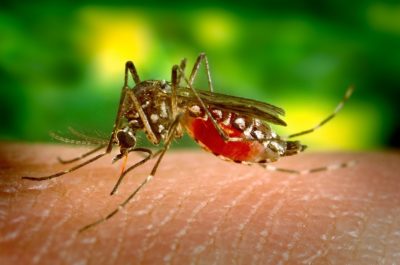After finding four new human cases of the West Nile virus, the Massachusetts Department of Public Health labeled Cambridge, Newton, Somerville and Watertown high-risk areas for infection on Thursday.

Three of the new cases were found in Middlesex County and another was found in Bristol County. Eight municipalities in Middlesex County and three in Bristol County were declared moderate-risk for WNV.
WNV is typically spread when an infected mosquito bites an individual, and can produce a range of reactions, from zero symptoms to severe ones that require hospitalization. There is no known treatment, according to the Massachusetts Bureau of Infectious Disease and Laboratory Sciences.
About 80 percent of those who are infected will not exhibit symptoms, according to a fact sheet produced by the state. People with mild infections tend to recover naturally, while more serious infections can cause permanent neurological effects and, in about 10 percent of severe cases, death.
Seven WNV cases have been reported in Massachusetts this year, with six out of the seven reported in Middlesex County. The state reported five total cases last year.
Catherine Brown, state epidemiologist at the Massachusetts Department of Public Health, said WNV-carrying mosquitoes are common in populated areas.
“They breed in small accumulations of stagnant water,” Brown said, “which are commonly found around in gutters, bird baths, flower pots and children’s toys when they are left outdoors.”
Eastern equine encephalitis, another mosquito-borne illness, is also on the rise — with four reported human cases this season.
State officials elevated Plymouth county’s risk level to “high” after discovering the fourth case on Sept. 4. Four municipalities are at critical risk for EEE, 10 are at high risk and 18 are at moderate risk.
Brian Farless, superintendent of East Middlesex Mosquito Control Project, said EEE and WNV are carried by different mosquito species.
“West Nile occurs more in urban communities and that’s normal. There are more artificial containers that hold stagnant water that produces mosquitoes, the primary infector for West Nile virus,” Farless said. “They are at low risk for EEE.”
To control the mosquito population and limit these illnesses, mosquito control professionals planted larvicide and aerially sprayed insecticides. The insecticides don’t cause adverse effects in humans, animals or other wildlife, according to the state, as they leave no residue.
While Farless’s district does not have EEE, he said the state has sprayed insecticides to control mosquito populations.
“For West Nile virus, we apply larvicide to catch basins,” Farless said. “Catch basins produce the primary infector for West Nile virus.”
Mosquito season runs from May to September in Massachusetts. The disease doesn’t go away until the first hard frost, usually in November or December, according to Susan Feinberg, public information officer at the Cambridge Public Health Department.
“There are fewer mosquitoes out because it’s the end of the season,” Feinberg said. “But the surviving mosquitoes, by the end of the season, are just more likely to carry the virus, and that’s true every year.”
Until then, Farless said WNV and EEE can be kept at bay using precautionary measures.
“Avoid mosquito bites. Wear an EPA-approved bug repellent. Dump standing water around your homes. Avoid the peak mosquito-activity times of dusk and dawn,” Farless said. “Fix holes in your screens and make sure your screens fit tightly within the window frame. Wear pants and long sleeves.”














